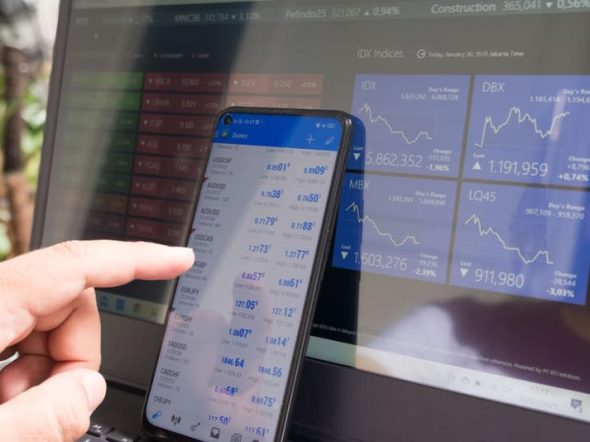With trillions of dollars changing hands every day, the foreign exchange (FX) market is the world's biggest and most liquid financial market. In forex trading, currencies are bought and sold with the intention of profiting from exchange rate movements. Anybody interested in trading currencies needs to understand the fundamentals of forex, and one of the key ideas to comprehend is the concept of forex currency pairs.
Currency pairings, which each reflect the exchange rate of one currency against another, are always traded in forex trading. The EUR/USD currency pair, for instance, shows how much the euro is worth relative to the US dollar. Any forex trader must comprehend the many sorts of currency pairings, how they operate, and the variables that affect their exchange rates. Let's examine the fundamentals of forex currency pairings and arm you with the information you need to start trading forex.
What are Forex Currency Pairs and their categories?
Investors that engage in forex trading purchase and sell currency pairs, each of which consists of two different currencies. While the second currency is referred to as the quote currency, the first currency is referred to as the base currency. The value of the quoted currency needed to buy one unit of the base currency is shown by the pair's exchange rate. As this process may be complicated for beginners, the best Forex brokers in USA offer traders the ability to buy and sell currency pairs, which are the foundation of the forex market. Traders can speculate on the price movements of currency pairs and profit from their predictions. Major pairings, minor pairs, and exotic pairs are the three broad categories into which currency pairs in forex can be divided.

Major, minor, and exotic currency pairs
The major currency pairs are the most heavily traded in the forex market. They consist of the US dollar and other major currencies, such as the euro, Japanese yen, British pound, Swiss franc, or Canadian dollar. The major currency pairs are highly liquid, and global economic and political events influence their exchange rates. Minor currency pairs, or cross-currency pairs, consist of two major currencies other than the US dollar. Examples of minor currency pairs include the euro versus the British pound (EUR/GBP) or the Australian dollar versus the Japanese yen (AUD/JPY). Minor currency pairs are less liquid than major currency pairs, and their exchange rates are influenced by factors specific to the countries whose currencies are involved. Finally, Exotic currency pairs consist of a major currency and a currency from an emerging or developing economy. Examples of exotic currency pairs include the US dollar versus the Mexican peso (USD/MXN) or the euro versus the South African rand (EUR/ZAR). Exotic currency pairs are the least traded of the three categories, and their exchange rates are influenced by factors unique to the countries involved, such as political instability, economic uncertainty, and commodity prices.
How are the currency pairs priced?
In the forex market, currency pairs are valued according to their exchange rates, which shows how valuable one currency is in relation to another. The exchange rate for the EUR/USD currency pair, for instance, shows how much one euro is worth in terms of US dollars. Exchange rates are subject to frequent fluctuation, which is caused by a variety of elements, including economic data, political developments, and market emotion. The bid price represents the price at which traders can sell the base currency, and the asking price represents the price at which traders can purchase the base currency when displaying the exchange rate for a currency pair.
For instance, if the EUR/USD currency pair's bid price is 1.2000 and the asking price is 1.2005, traders can sell or purchase one euro for 1.2000 US dollars or 1.2005 US dollars, respectively. The spread, which is used to describe the price of trading for traders, is the distinction between the bid and ask prices.
How to choose the Right Forex currency pairs to trade?
Choosing the right forex currency pairs to trade is a critical decision that can significantly impact your trading success. There are several factors that traders need to consider when selecting currency pairs to trade.
Market Volatility
One important factor to consider is market volatility. Highly volatile markets can provide significant trading opportunities, but they can also pose a greater risk to traders. Traders may want to consider the historical volatility of a currency pair when making their trading decisions.
Liquidity
Another crucial factor is liquidity. Liquidity refers to the ease with which traders can buy or sell a particular currency pair. Traders generally prefer currency pairs with high liquidity because they can enter and exit positions more easily and at better prices.
Economic Calendar
The economic calendar is another essential tool that traders can use to select the right currency pairs to trade. Economic indicators such as inflation rates, gross domestic product (GDP), and employment figures can significantly impact currency prices. Traders can use the economic calendar to stay informed about upcoming economic events that could affect the currency pairs they are trading.
Correlations
Correlations between currency pairs can also influence trading decisions. Some currency pairs may be positively or negatively correlated, meaning that they tend to move in the same or opposite directions. Understanding these correlations can help traders diversify their portfolios and manage risk effectively.
Trading hours
Finally, trading hours are an important consideration for forex traders. Different currency pairs have different trading hours, and traders may want to select currency pairs that align with their trading schedule and style.
